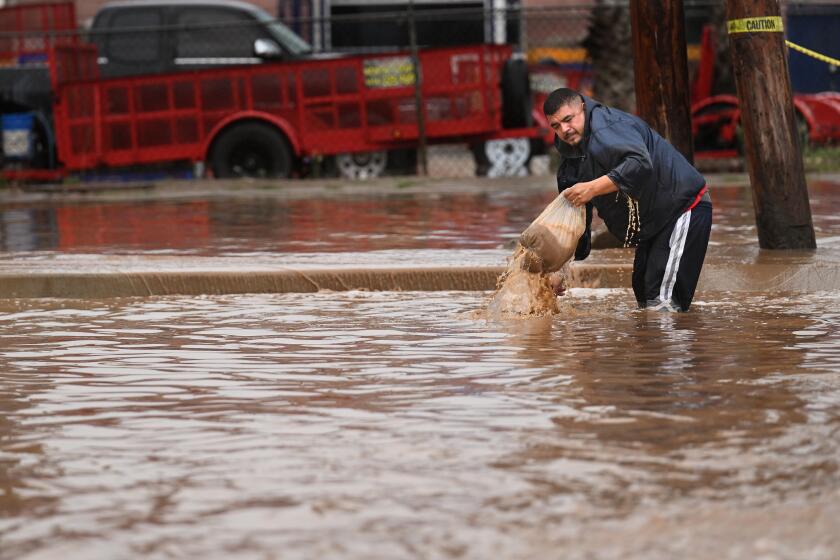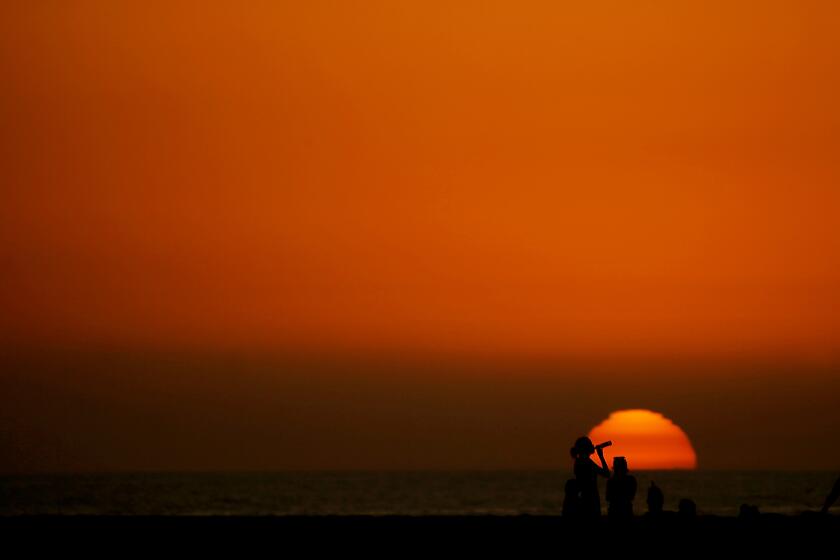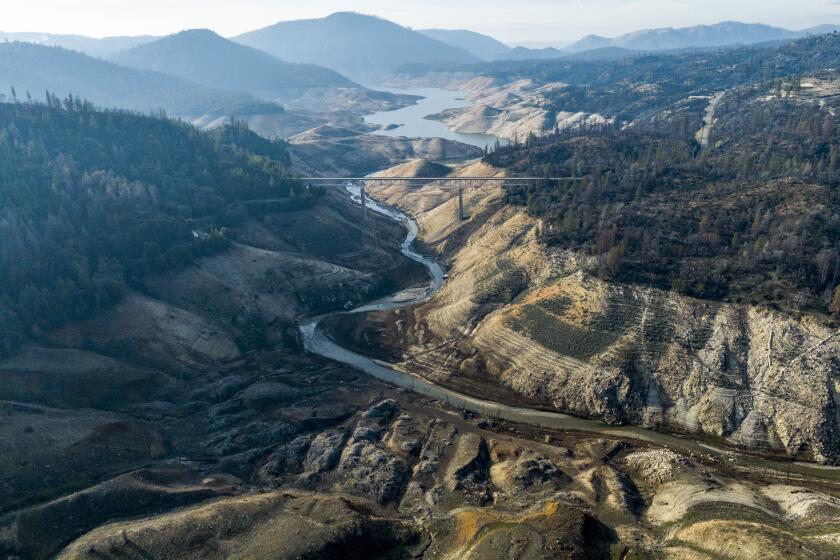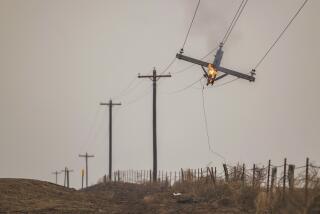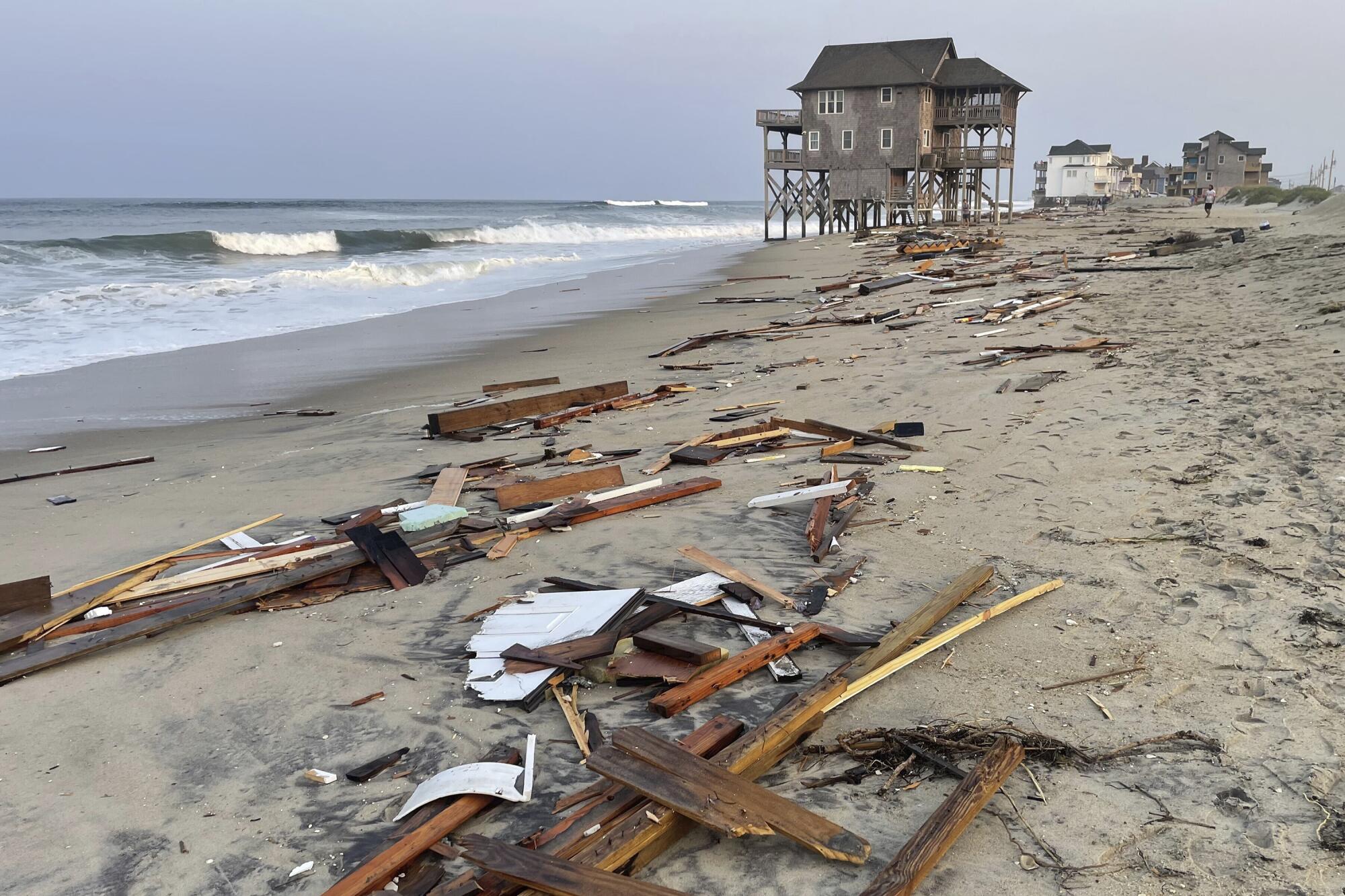
- Share via
Following dire forecasts for an above-normal hurricane season, conditions in the Atlantic have grown eerily calm in recent weeks.
The last time the Atlantic failed to produce any named storms between Aug. 13 and Sept. 3 was in 1968 — more than 50 years ago, according to a new report from researchers at Colorado State University. This was also the first Labor Day holiday weekend without a named storm in 27 years.
“This pronounced [quiet] period is especially remarkable given that it coincides with the time of year where the Atlantic climatologically gets very busy,” the report says.
The lull comes after federal officials warned of an 85% chance of above-normal Atlantic hurricane activity with as many as 25 named storms this year. So far, there have been five named storms, three of which became destructive hurricanes: Beryl, Debby and Ernesto.
Aggressive and impactful reporting on climate change, the environment, health and science.
But experts say it’s too soon to call the season a wrap, and warned that storm activity probably will ramp up in the weeks ahead. The Atlantic hurricane season runs from June 1 to Nov. 30.
“We are a little behind where we should be with five named storms to date,” said Dan Harnos, a meteorologist with the National Oceanic and Atmospheric Administration’s Climate Prediction Center. But “the typical peak of the season is not until Sept. 10, and more hurricane activity historically occurs following the peak than prior to it.”
In fact, it is more common for the second half of the season to see significantly more activity than the first, with August, September and October contributing to 90% of seasonal activity, according to the National Hurricane Center. In 2022, eight hurricanes occurred after Sept. 1.
Still, the reasons for the recent lull are somewhat perplexing.
Conditions on the West Coast may be calmer than last year, when a rare storm swirled off the coast of Baja California before making landfall in early August.
David Zierden, Florida’s state climatologist, said there are numerous factors that could be at play, including the delayed onset of La Niña, shifting monsoon patterns in West Africa, and Saharan dust activity.
La Niña, a climate pattern in the tropical Pacific that helps drive weather patterns around the globe, was a major factor in the early season’s outlook. That’s because it tends to reduce wind shear in the tropics, enabling hurricanes to grow in strength, and keeps Atlantic Ocean water warm, which helps fuel storms.
But La Niña has been slower to develop than initially anticipated, and it is now not expected to make an appearance until the fall.
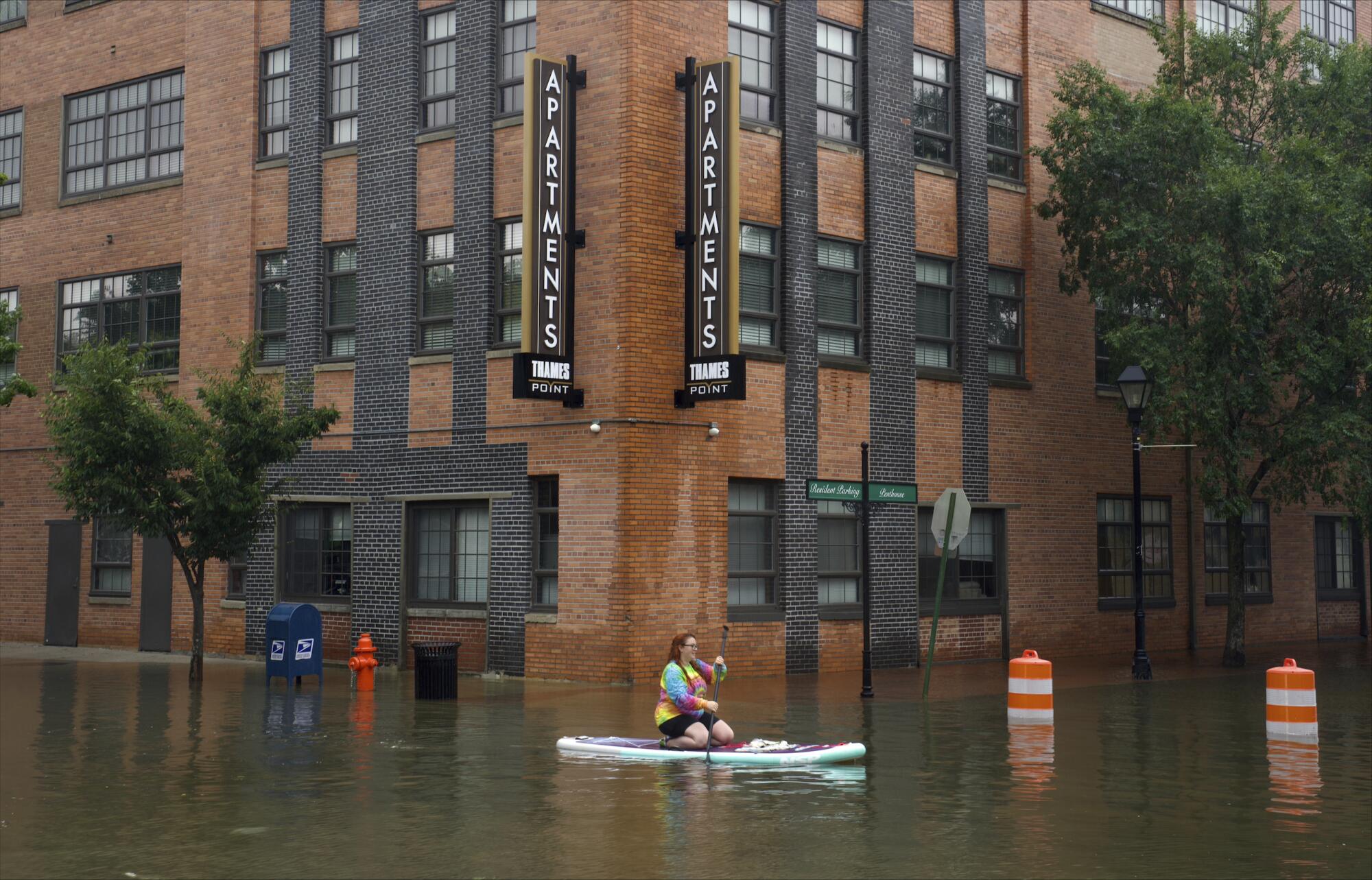
“There’s still a 60% to 70% chance that it will develop and be in place for the remainder of our hurricane season, so that still seems to be a factor that would indicate a more active season, along with near-record and record-high sea surface and oceanic heat content,” said Zierden, who is also a research associate at Florida State University.
And although western Africa’s rainy season has been active this year, it has been displaced farther north than normal for reasons that are not yet entirely clear, Zierden said. Because of this, the disturbances that are coming off Africa are tracking into drier air and less favorable sea surface temperatures for hurricane formation. As a consequence, storms are “not really developing like they would if they’d come off that more southerly track.”
Saharan dust is also a mitigating factor, as it makes the atmosphere drier, more stable and less prone to hurricane formation. The dust is usually a big player earlier in the season, but this year, its activity extended well into August, which may have contributed to the lull.
Blistering global temperatures have one NASA scientist warning: ‘We could be in uncharted territory.’ Others aren’t so sure.
But there are other factors that could still spell trouble — namely, the warm ocean temperatures in much of the Atlantic basin, which can provide more energy to feed storm development. Sea surface temperatures in 2023 far exceeded those of any previous year on record, and this year has run similarly hot and in some instances even exceeded it.
“It’s part of an overall trend of warming oceans and warming sea surface temperatures, and that can be attributed to climate change and anthropogenic warming,” Zierden said.
Even still, warm waters don’t necessarily mean all the ingredients that go into tropical cyclone formation are going to be favorable in a warming climate, he said, which means the overall number of tropical cyclones worldwide may not change much.
However, the potential for stronger storms is increasing, as evidenced by Beryl, which became the Atlantic’s earliest Category 5 hurricane on record when it formed in late June.
The storm bore down on parts of the Caribbean and the Gulf Coast and was associated with at least 36 deaths in Texas, where it flooded highways and knocked out power for more than 2.5 million people.
Hurricane Debby hit the west coast of Florida in early August and also delivered powerful winds and widespread flooding. The most recent storm, Ernesto, formed on Aug. 12 and went on to pummel Puerto Rico and Bermuda.
For that reason, Zierden said, “we shouldn’t be letting our guard down or breathing a sigh of relief.”
“My main concern is not that we’re going to catch up and hit the forecasted number of storms — it’s that of the ones that do form, one or more have the potential, with these very warm sea surface temperatures in the Gulf of Mexico and Caribbean, to be very strong, damaging and even deadly storms,” he said. “That is still on the table as we enter the peak of the Atlantic hurricane season.”
The climate pattern could plunge California back into aridity in the months ahead.
He’s not the only one who said the season might not hit the anticipated number of storms.
The recent lull in the activity prompted AccuWeather, a privately owned weather forecasting website, to reduce its seasonal forecast to 16 to 20 named storms; six to 10 hurricanes; three to six major hurricanes; and four to six direct impacts to the United States.
“Our team has been integrating the latest data and insights while monitoring the unusual conditions that have hampered the development of tropical storms and hurricanes last month,” AccuWeather’s chief meteorologist, Jon Porter, said in a statement about the downgrade.
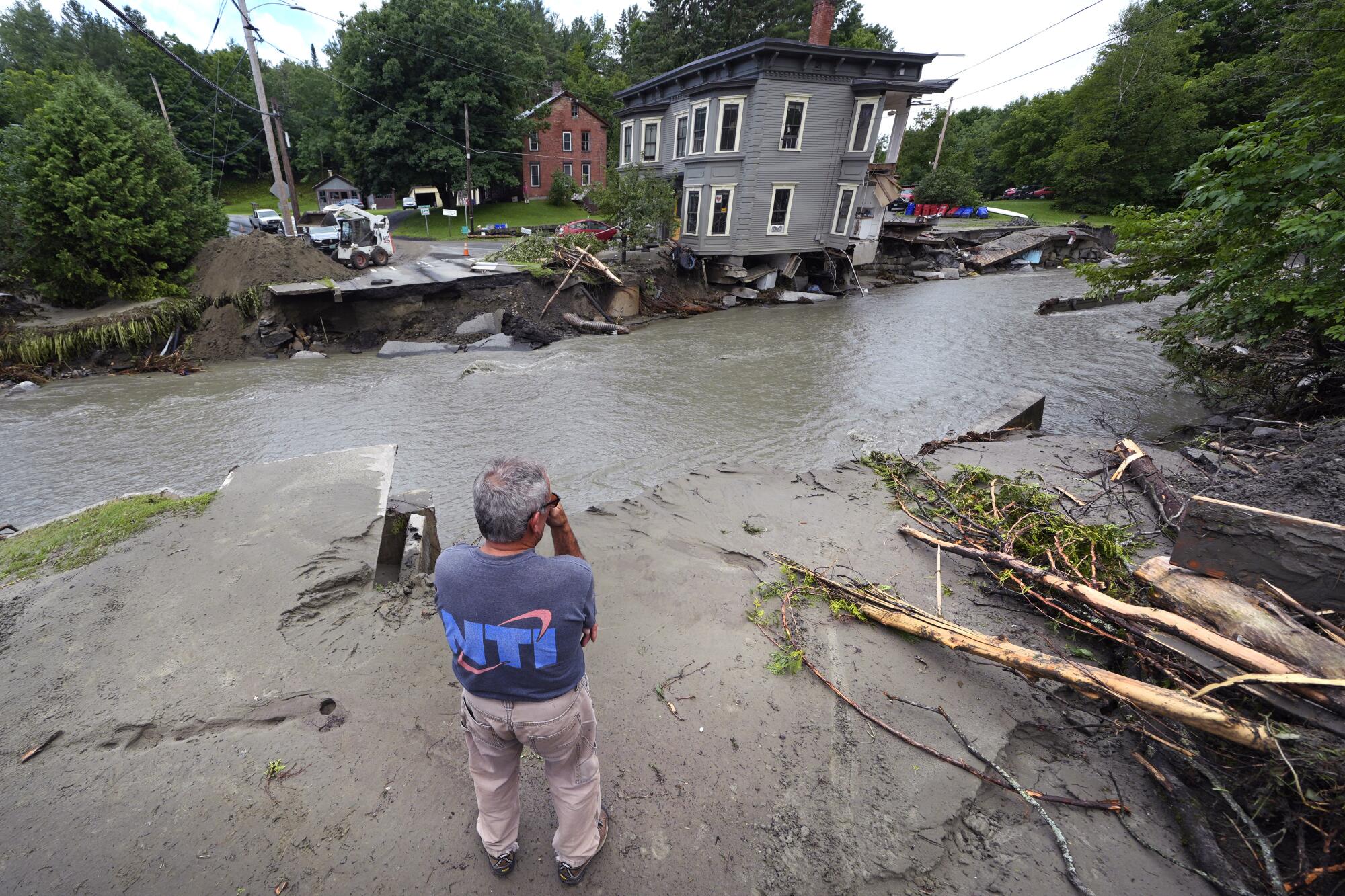
However, Porter noted that the season already has been damaging, with preliminary estimates indicating as much as $32 billion in U.S. economic losses from Hurricane Beryl and $28 billion from Hurricane Debby.
“We don’t want anyone to let their guard down even though we are now forecasting fewer storms in total,” Porter said, adding that ocean waters are still incredibly warm near many of the country’s coastal cities. “It only takes one powerful hurricane or slow-moving tropical storm to threaten lives and cause devastation.”
Officials with NOAA declined to comment on AccuWeather’s updated forecast, but said their Climate Prediction Center’s outlook from Aug. 8 will be its final issuance for the season.
The outlook showed minimal changes from the agency’s first outlook issued in May, calling for as many as 24 named storms, 13 hurricanes and seven major hurricanes.
The outlook for the Pacific basin, which saw a rare storm last year in Hurricane Hilary, also remains unchanged with a 60% chance of a below-normal season.
But even though hurricane season officially ends Nov. 30, there are indications that tropical storms could continue to form in the Atlantic into December, said Erica Grow Cei, a meteorologist and spokesperson for the National Weather Service.
“This is because of the anticipated onset of La Niña, which suppresses wind shear, and the anomalous lingering warmth that’s expected to remain in the tropical Atlantic and in the Caribbean,” Grow Cei said.
The Accumulated Cyclone Energy — NOAA’s measure of overall activity — also is still running well above normal because of contributions from Beryl, Debby and Ernesto.
“The hurricane season got off to an early and violent start with Hurricane Beryl, the earliest category-5 Atlantic hurricane on record,” NOAA Administrator Rick Spinrad said in the agency’s August update.
“NOAA’s update to the hurricane seasonal outlook is an important reminder that the peak of hurricane season is right around the corner,” he said, “when historically the most significant impacts from hurricanes and tropical storms tend to occur.”

